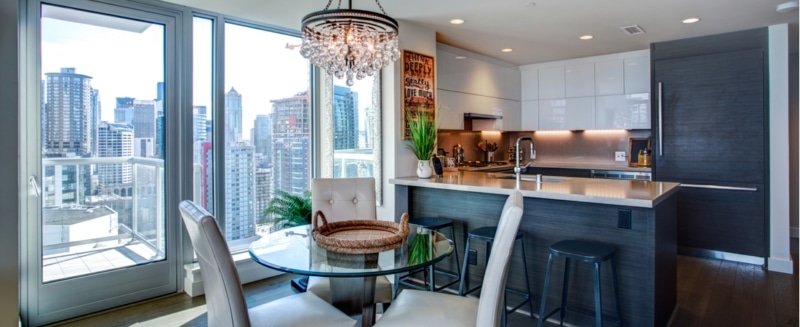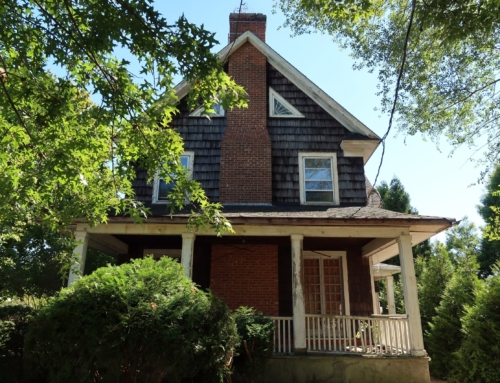This reader wants to know how condo assessments are determined because they don’t think their building developer got the ownership percentage split right.
Q: Our building has six units, all the same size and layout. It is located in Illinois. The assessment percentage was designated by the builder and laid out in the declaration of condo ownership.
I recently purchased one of the units, so I was not part of that process and turnover from the builder. I know this tends to vary by building and state law.
Four of the units were determined to have 16% ownership and the penthouses have 18%. There’s also some commercial space that makes up the final 15%. The two penthouses have the rooftops that only they can use and access.
I understand these percentages were set by the developer, but it doesn’t seem right that the top floors basically have double the square footage with their rooftop, but only pay 2% more. How is outdoor square footage counted towards ownership and do higher floors typically pay more because they are higher?
A: You make an interesting observation and your questions are quite valid. In general, you’d think that 10 identical sized units in a condominium building would have the same exact percentage ownership in a building. And in some parts of the country that would be the case. You could say that 10 exact units should all pay the same assessments in the condo building: they all have the same number of rooms and make about the same use of the common elements in a building, so, yes, they should all have the same percentage ownership in the building.
When a developer builds a condominium building and creates the legal documents to bind all of the units owners, the developer has certain limitations when creating those documents. One of the key issues is determining how to divide all the expenses that will be incurred in the future by the individual unit owners. Many developers simply decide that the size of each unit is the deciding factor. In the easiest example that we set forth above, 10 identically sized units would each own 10 percent of the association.
Each unit would pay 10 percent of the expenses and everyone should be happy going forward, right? Well, sometimes it’s not that simple. If our 10 units are the same size but have very different values because some units have a better view and others face a wall, those values can disrupt our simple math.
For example, in some places, real estate taxes are based on the condominium units percentage ownership in the association. So, if we have 10 identical units, all 10 units would pay the exact same amount in real estate taxes. Again, in our example, we might think that the 10 identically sized units would have the same value, but we may be way off if those 10 units are one unit per floor in a 10 floor building.
The unit in the top floor will be worth much more than the unit on the first floor. So while for association expense purposes the 10 percent number may work fine, that same percentage would be out of whack when it comes to real estate taxes. For this reason, some developers use the initial value they set for the units to determine the percentage interest of those units. If all 10 units combined were worth $1,000,000, and the top floor unit was marketed at $200,000 and the first floor unit at $50,000, the top unit would have a 20 percent share in the association and the first floor unit a 5 percent share.
Of course there are many variations to this method. You mentioned that the penthouse units in your building had only a two percentage point difference with the lower floor units. It could be that those units sold for a tad more than the other units and that the system was fair at the time. It also could be that the original developer created the system but gave preferential treatment to the penthouse units. We don’t think that would have been fair but unless there is a law in your state that prohibits the apportionment of the interest in a particular manner, you may be stuck with the way it was done.
In some situations, roof decks, parking spaces, and other amenities that go with one particular unit can affect the method of computing the percentage interest in an association. Where you can use simple math, the simple way can be the fairest way to do the division. But where the system makes it more complicated, you may end up with an unfair balance and there may be nothing you can do about that. Frequently, the only way to change the percentage ownership in an association is to have every unit owner agree to an amendment to the declaration document. And, sometimes it’s impossible to get everyone to agree to the changes as one person’s gain is another person’s loss.
Sam lived in a small condo building many years ago where his unit had a 3 percent ownership interest and the largest unit that had the only garage in the building had a 4 percent ownership interest. After doing some digging, Sam figured out that the original developer created that unit for himself and basically shifted his association expenses and reduced his taxes at the expense of the other unit owners. But there was no way to change it.
With all this said, in smaller buildings it pays to do your homework and understand what you are getting into when you buy into a condominium association, read the declaration, ask questions and hire a good real estate attorney to help you through the process.







The percentages in this scenario add up to 115. Where’s the error?
Hi Stu,
You’re right. The numbers don’t add up. So, she either has miscounted the number of units in the building (unlikely) or doesn’t fully understand how the percentages are assigned. We typically edit letters (or emails) for clarity and I just missed this one.
Thanks for keeping a close eye on it.
Best,
Ilyce